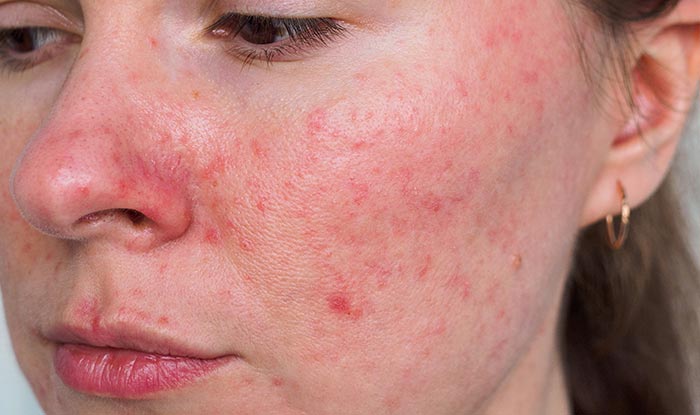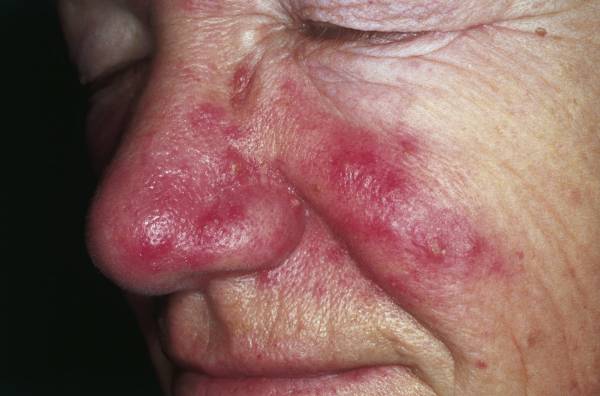
Rosacea is common in the third and fourth decades. Pathogenesis is uncertain, but genetic
factors play a part. Rosacea has a particularly high prevalence in Ireland (Celts with fair
skin).

What should I ask?
• Patients will often have had a long-standing tendency to flush or blush easily, now the
face is permanently red.
• What makes the redness worse? the skin is easily irritated by topical products. Alcohol,
spicy foods, sudden temperature change, and hot drinks can all precipitate reddening.
Sunlight may also exacerbate rosacea. the role of demodex is uncertain.
• What does the patient notice? Crops of red bumps (papules), ‘yellow- heads’ (pustules)?
Is the skin rough or scaly? (Scale is seen more often in seborrhoeic dermatitis than
rosacea, but the conditions may overlap).
• What medicaments is the patient using and for how long? topical corticosteroids can
cause a rosacea-like rash (perioral dermatitis). Oral corticosteroids cause a pustular rash
and redness. Peripheral vasodilators may exacerbate redness.
• Patients may have noticed enlargement of the nose.
• Eye symptoms are common, e.g. burning, itching, redness, grittiness.
What should I look for?
Signs vary. Rosacea may be predominantly erythemato telangiectatic (red),
papulopustular, phymatous, or granulomatous. Look for:
• A rash affecting the central face, usually in a symmetrical pattern, but, on occasion,
rosacea can be strikingly asymmetrical.
• Erythema and telangiectasia.
• Dome-shaped erythematous papules and pustules without comedones. Comedones
suggest acne, not rosacea. Facial angiofibromas in tuberous sclerosis may be
misdiagnosed as rosacea.
• Brownish yellow papules (granulomatous rosacea?).
• Greasy skin, sometimes with diffuse fine scale. Prominent scaling suggests dermatitis
(seborrhoeic or contact) or, if in a limited area, fungal infection.
• Facial swelling (lymphoedema). Persistent erythema and solid oedema of upper 2/3 of
the face (Morbihan disease) is a form of rosacea.
• A bulbous nose (rhinophyma) because of hypertrophic sebaceous glands and an
overgrowth of soft tissues.
• Ocular rosacea—conjunctivitis, blepharitis, chalazion, hordeolum.
• Sparing of the trunk—unlike acne, rosacea does not affect the back or chest.
• Cutaneous B-cell lymphoma may simulate rosacea with firm erythematous papules on
the forehead, cheeks, chin (rare).